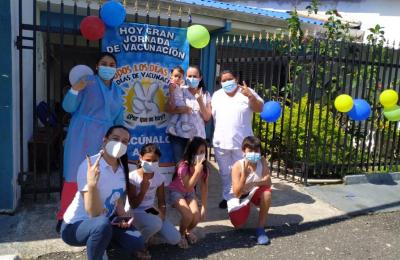Rapid vaccination monitoring and its impact on vaccination coverage for high-quality catch-up campaigns in the Dominican Republic, 2023
Objective
To assess the contribution of rapid vaccination monitoring to the achievement of vaccination coverage targets in catch-up vaccination campaigns.
Methods
Data on catch-up vaccination were obtained from the database of the Directorate of Vaccine- Preventable Diseases. Data analysis was performed in Stata V.15®. Frequency and summary statistics were calculated; the p value was used to determine statistical significance. The change in mean coverage between interventions was assessed with Student’s t-test.












